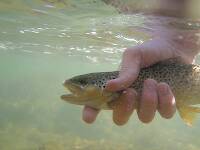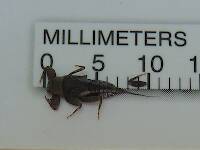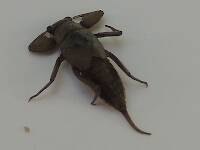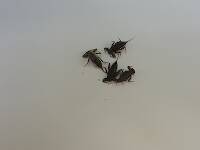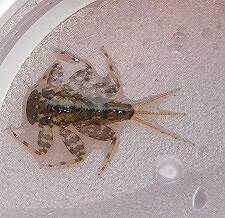
Salmonflies
Pteronarcys californica
The giant Salmonflies of the Western mountains are legendary for their proclivity to elicit consistent dry-fly action and ferocious strikes.
Featured on the forum

Troutnut is a project started in 2003 by salmonid ecologist Jason "Troutnut" Neuswanger to help anglers and
fly tyers unabashedly embrace the entomological side of the sport. Learn more about Troutnut or
support the project for an enhanced experience here.
PaulRoberts on Feb 23, 2013February 23rd, 2013, 12:58 pm EST
Drunella drifting with current:
http://www.youtube.com/watch?v=3h9elSPDRQs
Shows nymphs pretty much out of control, probably resting between swimming bouts. A follow up to previous discussions about fly drift posture.
http://www.youtube.com/watch?v=3h9elSPDRQs
Shows nymphs pretty much out of control, probably resting between swimming bouts. A follow up to previous discussions about fly drift posture.
Crepuscular on Feb 23, 2013February 23rd, 2013, 1:45 pm EST
Cool video. Thanks for posting the link.
Eric
Eric
Entoman on Feb 23, 2013February 23rd, 2013, 2:37 pm EST
Excellent, Paul. Sure confirms why some designs that can't help but drift upside down still work so well and that getting too anal about nymph orientation when fished dead drift is probably unnecessary. Also dispels the myth that nymphs are either drifting along the bottom or at the surface. This isn't specific, either. I've noticed the same behavior with other mayflies, stones, and caddis as well. Ever notice the odd baetid every now and then attached to the meniscus upside down when they hatch? My guess is that's the source of a lot of cripples. Great stuff, thanks!
"It's not that I find fishing so important, it's just that I find all other endeavors of Man equally unimportant... And not nearly as much fun!" Robert Traver, Anatomy of a Fisherman
Quick Reply
Related Discussions
Topic
Replies
Last Reply
10
Sep 12, 2010
by Martinlf
by Martinlf
19
Jan 20, 2008
by Troutnut
by Troutnut






